|
March 2006
Catkins and Bark
by Sandy Leven
Like most rock gardeners I grow a few small willows. Being Scottish I was entranced by the story behind one of my favourite willows, Salix x boydii, that hybrid found in Victorian times in Glen Fiagh near Glen Clova in Angus, by the late [very late] Dr William Boyd. I think his friends probably called him Bill - Bill Boyd, the doctor who liked plants. He must have 'had a good eye' to have spotted this unique seedling, a female apparently. Just think how grand her brothers would be if he could have found them. With willows and birds, the males are often the more spectacular. Young plants have nice golden stems in winter. The catkins will appear in April or May. Old plants have a gnarled appearance and can look as if the have braved a millennium of winters.
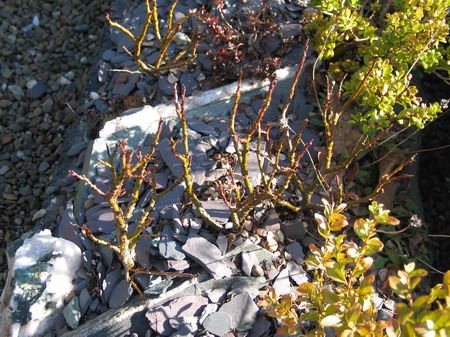
Salix x boydii
Current thought is that Salix x boydii is a hybrid between Salix lanata and Salix reticulata. S. lapponum and S. herbacea have also been though at one time or another too have played a part. There seems no doubt that Salix reticulata is one of its parents. I don't grow Salix lapponum but have plants of the others. My Salix lanata is a big plant now and forms a screen at the top of my west facing slope. It came from the nursery owned by the late James Aitken of Perth, who lived just uphill from Branklyn garden. Mr Aitken was a keen hill walker who had unparallel knowledge of Scotland's mountain plants. I have little doubt that my S. lanata can trace its origins to plants of the Perthshire hills. It is easy to propagate by cuttings. I love the big catkins which will soon appear with its felty silver leaves. Conservationists are fencing off and replanting Salix lanata on Ben Lawers.
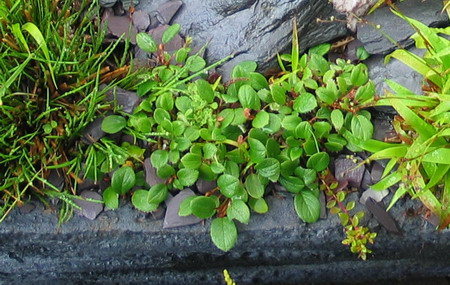
Salix reticulata in a trough at Gardening Scotland in June 2005
Salix reticulata creeps across rocks fronting a slope. I once won the trophy for best Scottish native plant with it at Glasgow. Its pollen covered catkins looked just right on show day. The plant has never looked as good since. It is prone to a rust which deforms the leaves. Plants vary in the size of their leaves and we have seen whole hillsides covered with S. reticulata in the Swiss mountains in the southern Valais region. Many other plants grow through the strong mats of willow. The stems root as they go, so one plant can occupy a huge area. It is a circumpolar plant but I don't think we saw it in Canada.

Peyto Lake, Alberta.
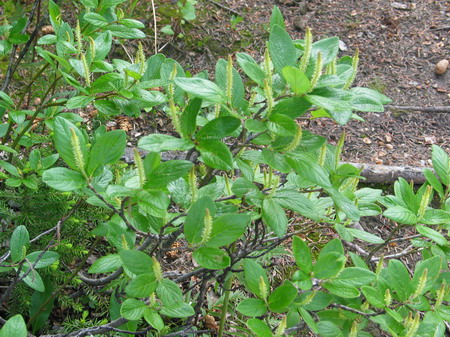
Salix barratiana near Peyto Lake
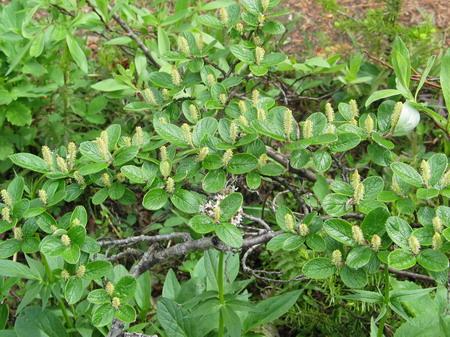
Salix vestita near Peyto Lake
Lots of willows do grow in the Canadian Rockies. We have travelled from Banff to Jasper and we saw several without any difficulty. At 'tourist spots' the park authorities have erected special boards to let people know what is growing there. It should be easier to identify willows when the ranger gives you a picture or drawing and its name plus catkin colour. Well done Canada.

Me by the lake at Mount Edith Cavell
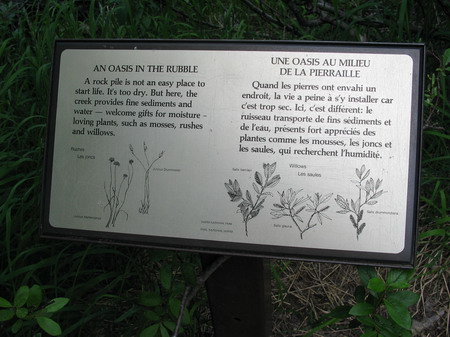
Sign in National Park
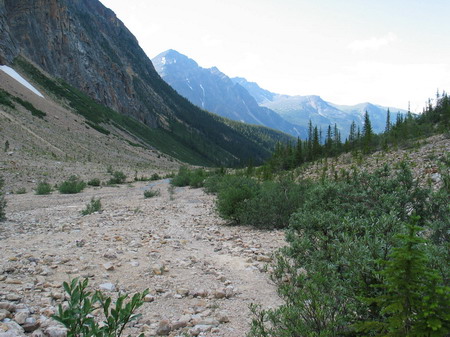
Willows by the path
At Mount Edith Cavell, just South of Jasper, there is a fine walk from the car park to a small tarn [Glacial lake they call it] which has small icebergs floating in it. The path winds up through the terminal moraine of Angel Glacier and the willows grow in detritus which gather between the rocks.
Several very attractive small willows grow there amongst them are the following
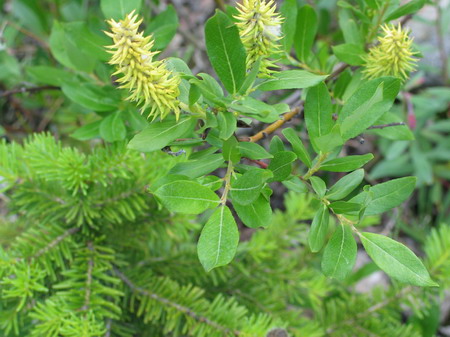
Salix lutea
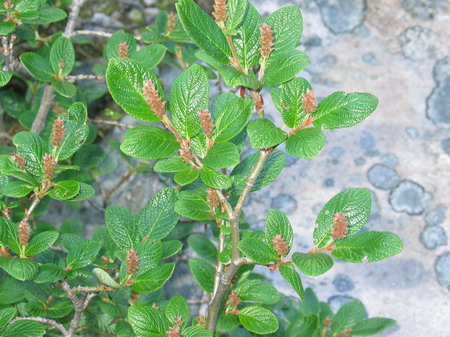
Salix barclayi
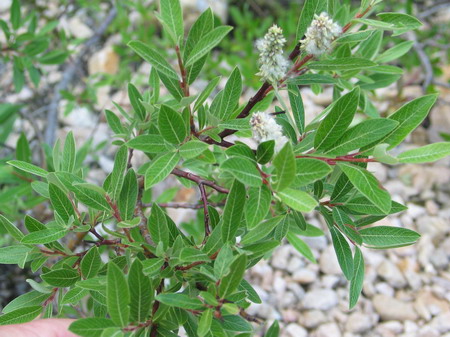
Salix drummondiana
High up on the mountain peaks tiny Salix arctica creeps along just beneath the surface and pushes up its shoots where it can. It is a tin y plant with leaves only a 9 or 10 millimetres across. It has attractive red catkins.
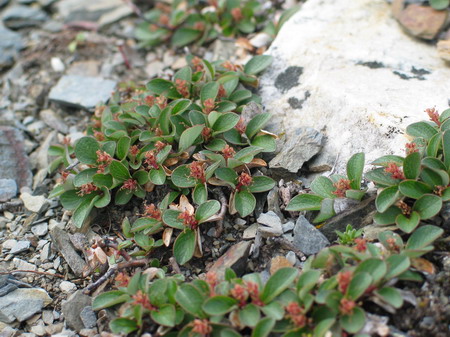
Probably Salix arctica on the Whistlers, near Jasper, Alberta.
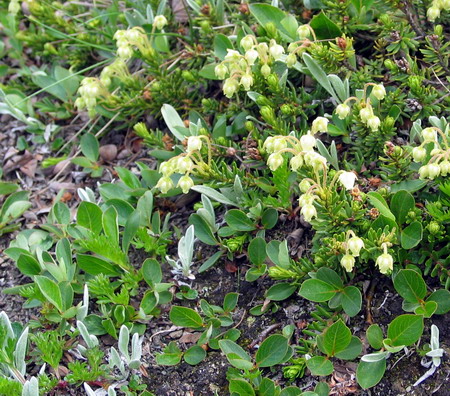
Another Canadian Salix with Phylloce glandulifera
Although most willows in the garden are a few weeks from producing catkins, Birches and hazels have started. Corylus avellana contorta is another favourite of mine. I have always known it as 'Harry Lauder's Walking Stick' because of its twisted stems. Sir Harry had a twisted stick.
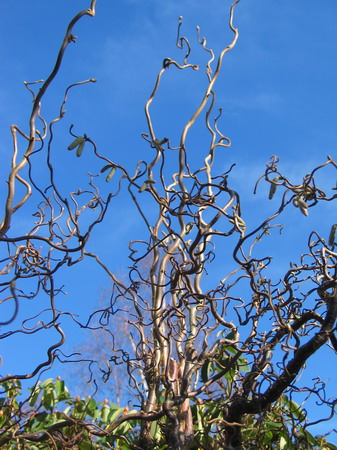
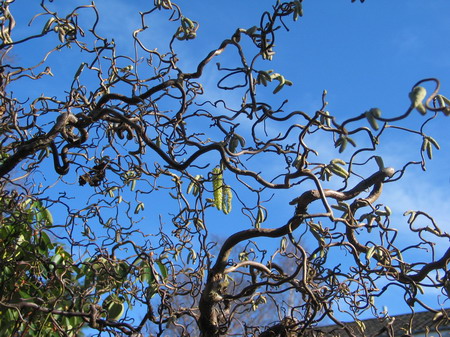
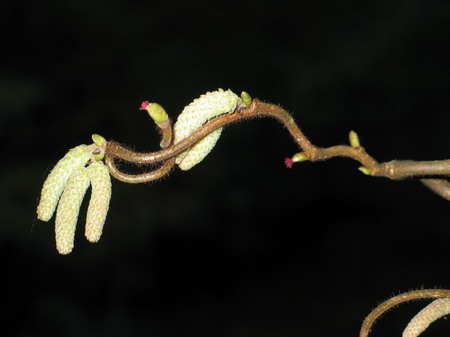
3 pictures of Corylus avellana contorta. The third picture shows the red female flowers as well as the male catkins.
Last weekend we visited Dundee Botanic Garden. This garden was started in the late 1960s when I was student in Dundee [still Queen's College of St Andrews university for most of the time I was there] The garden is a wonderful oasis packed with plants from around the world arrange into Continent compartments. There we saw the best catkins I had ever seen.
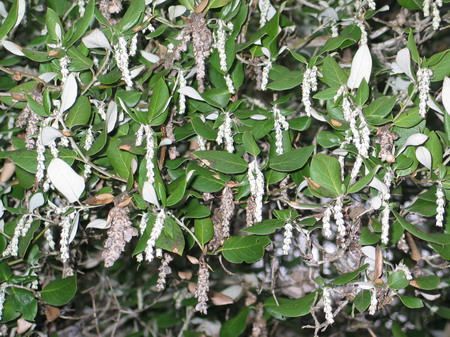
Garrya eliptica in Dundee BG
I thought the shrub looked like Garrya elliptica from California but the catkins were just to big for this to be an ordinary Garrya. I saw a man who looked as if he blonged in the garden [he was trimming shrubs] and I decided to ask him about the shrub. He turned out to be Les Bisset, who until his retirement was in charge of the garden. He knew lots about nearly every plant I pointed to and told me the history of others. What a pity the afternoon was drawing to a close.
The shrub which I admired is a selection of Garrya elliptica named James Roof. The catkins are at least 10 inches long
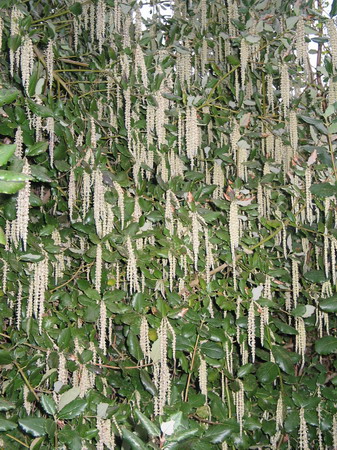
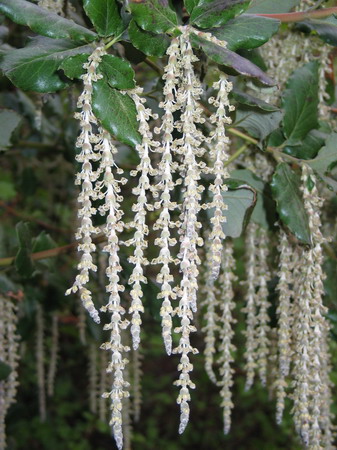
Garrya elliptica James Roof
Like willows, Garrya has male and female forms. James Roof as the name might suggest is a male form, hence the reason that it is so magnificent [said Les].
At this time of year it is much easier to appreciate the textures and colours of the barks on trees and shrubs. Another Californian shrub or small tree which was really spectacular was the manzanita, Arctostaphylos manzanita. It is a member of the ericaceous. Its smooth, dark, red-brown trunks shone in the late afternoon light. You could see its resemblance to rhododendron especially one like Rh. thomsonii.
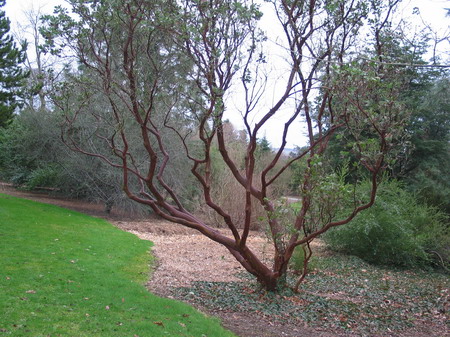
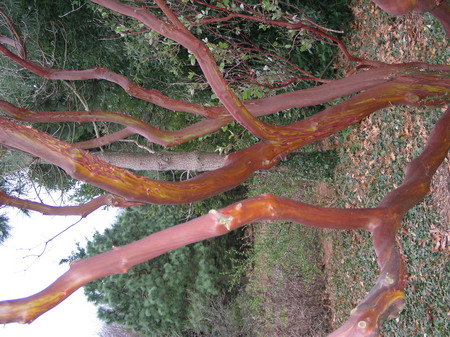
Arctostaphylos manzanita also from California
Bark of the day might go to Polylepis australis, an evergreen member of the rose family, which looks nothing like a rose. Rough, Shaggy, Golden and Brown, it looks like an Acer davidii on hormone treatment. It comes from South America and not Australia as its name suggests.
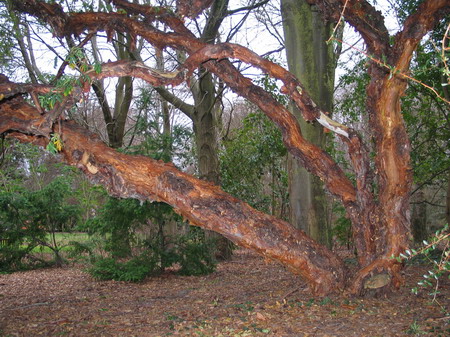

Polylepis australis
Eucalyptus provide endless interest once you decide you want to look at bark. Cream, Green, Brown, Smooth, Peeling, Striped and Blotchy. All these words describe Eucalyptus bark. Dundee had lots of them. I have two in my garden. I used to have a magnificent Eucalyptus guniii at the kitchen door but I ha it chopped down because I was worried about the house foundations. Although they are big trees and can be used for shelter, the fact that Eucalyptus have superb bark means they can be appreciated all through the year. All gardens need some eight and you could do worse than choose one of the folowing for a specimen tree.
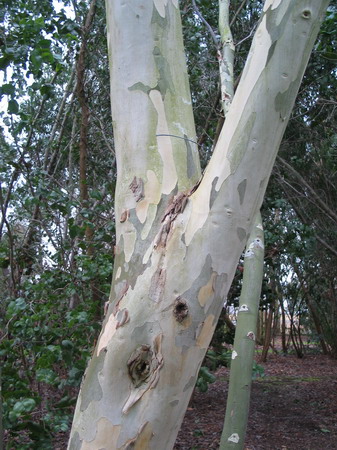
Eucalyptus pauciflora niphophylla
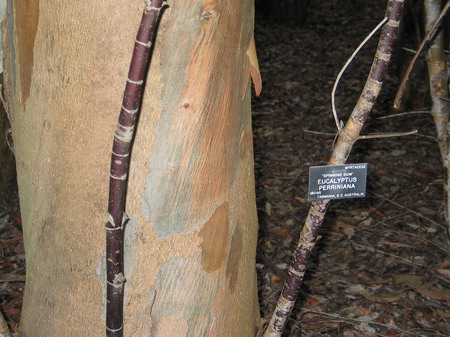
Eucalyptus perriniana
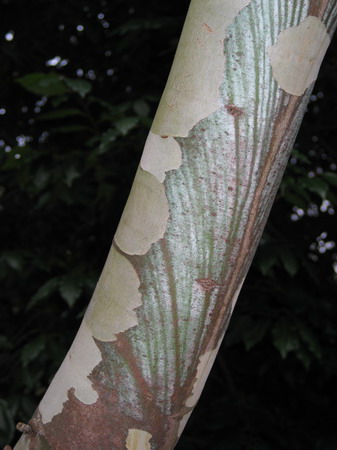
Eucalyptus pauciflora debeutzvillei
This last one sounds like a car. I hope you will get in your cars on the 25th March and make for the 'Stirling 'show in Dunblane. Check the Show schedule and you will see it is in the Victoria Hall beside the railway station. If you don't want to drive - come by train. If you can't make Dunblane, remember that the Blackpool show is one week earlier on the 18th March. You are sure to see great plans at both.
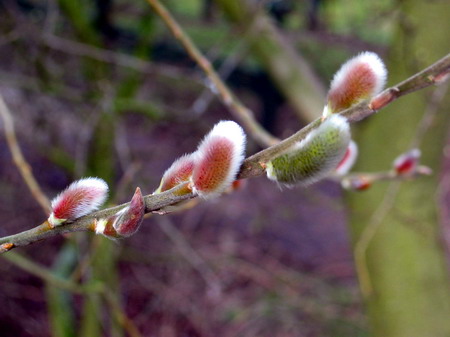
Lastly here is an ordinary pussy willow at Vane farm by Loch Leven.
^ back to the top ^
|

